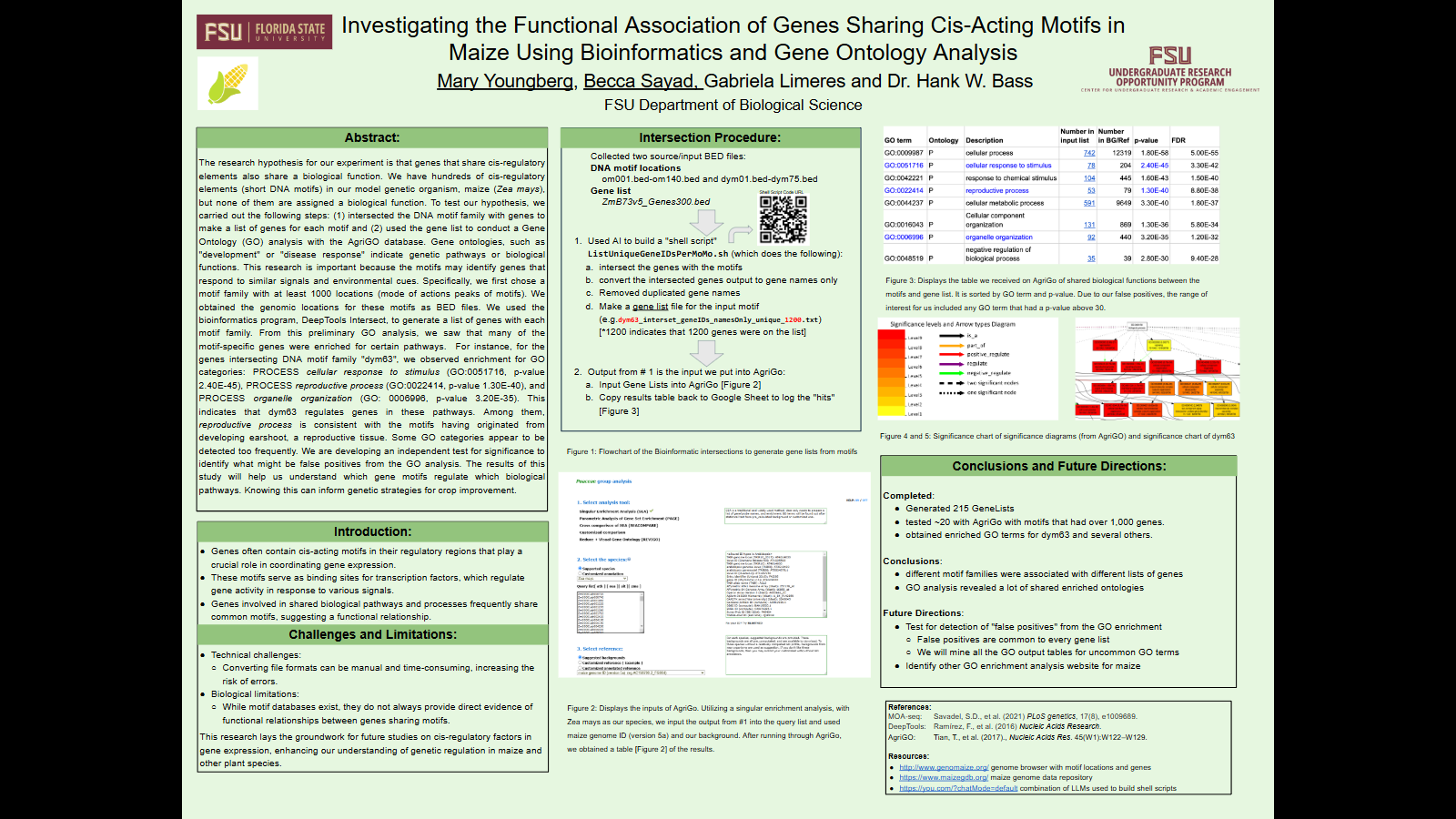Research Symposium
25th annual Undergraduate Research Symposium, April 1, 2025
Mary Youngberg Poster Session 1: 9:30 am - 10:30 am/ Poster #197

BIO
Hello, my name is Mary Youngberg, and I am a sophomore majoring in IMS: Pre-Clinical Professions. Born and raised in Rockaway Beach, NY, I’m pursuing a career as a Physician Assistant, driven by a passion for healthcare and helping others. I’ve also conducted research in maize genetics, focusing on how DNA motifs regulate gene function—a study that could lead to advances in crop development and sustainability. By combining my love for science and medicine, I hope to make a lasting impact both in healthcare and beyond.
Investigating the Functional Association of Genes Sharing Cis-Acting Motifs in Maize Using Bioinformatics and Gene Ontology Analysis
Authors: Mary Youngberg, Dr. Hank BassStudent Major: Pre-Clinical Professions
Mentor: Dr. Hank Bass
Mentor's Department: Department of Biological Sciences Mentor's College: Biological Sciences Co-Presenters: Becca Sayad
Abstract
The research hypothesis for our experiment is genes sharing cis-regulatory elements also share a biological function. We have hundreds of cis-regulatory elements (DNA motifs) in our model organism, maize (Zea mays), but none are assigned a biological function. To test our hypothesis, we carried out these steps: (1) intersected the DNA motif family with genes to create a list of genes for each motif and (2) used the gene list to conduct a Gene Ontology (GO) analysis with the AgriGO database. Gene ontologies, such as "development" or "disease response," indicate genetic pathways or biological functions. This research is important because the motifs may identify genes that respond to similar signals and environmental cues. Specifically, we first chose a motif family with at least 1000 locations (mode of action peaks of motifs). We obtained genomic locations for these motifs as BED files. We used the bioinformatics program, DeepTools Intersect, to generate a list of genes with each motif family. From this preliminary GO analysis, we found many of the motif-specific genes were enriched for certain pathways. For genes intersecting DNA motif family, we observed enrichment for GO categories: PROCESS cellular response to stimulus, PROCESS reproductive process, and PROCESS organelle organization. This indicates that dym63 regulates genes in these pathways. Among them, reproductive process is consistent with the motifs originating from developing earshoot, a reproductive tissue. Some GO categories appear to be detected too frequently. We are developing an independent test for significance to identify potential false positives from the GO analysis.
Keywords: genetics, maize, bioinformatics


